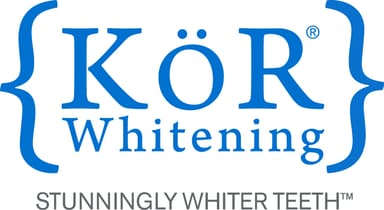How KöR Whitening Is Formulated to Combat Dentinal Hypersensitivity
If you have ever experienced tooth pain after eating ice cream or drinking a cold beverage, then you know what it is like to have dentinal hypersensitivity. Characterized as general soreness or discomfort, dentinal hypersensitivity is common to teeth whitening.
KöR Whitening was developed as a system of products and methods designed to work in tandem. These solutions to whitening based problems make KöR Whitening the leader in providing great results with a minimal amount of sensitivity.
Oxalate Based Desensitizing
Dentin consists of microscopic channels called dentinal tubules. They extend from the pulp to the enamel border. The entrance to the tubules is blocked by smear plugs to limit the movement of tubular fluid. If smear plugs become dislodged or removed, tubular flow increases significantly. Smear plugs are removed during the oxygenation phase of whitening, often creating dentinal hypersensitivity.
KöR Complete Desensitizer is a unique potassium oxalate desensitizer that strongly bonds to enamel which immediately closes open dentinal tubules. It was formulated to re-plug those smear plugs that were lost during whitening.
A Desensitizer That is Separate From Whitening Gels
Some whitening gels include fluoride, potassium nitrate, or ACP mixed in with the gels. This however has proven to be ineffective. Fluoride and ACP take long periods of time to become effective and whitening sensitivity needs immediate help. Potassium Nitrate is often unsuccessful in relieving whitening sensitivity. Whitening gels create a strong outward flow of tubular fluid away from the pulp while potassium nitrate is fighting upstream to try and reach the pulp.
The answer is to use a desensitizer before and/or after whitening. KöR Complete Desensitizer is designed to be used in conjunction with KöR Whitening gels, but is applied separately so it can undo any sensitivity the whitening may have created.
Whitening Gels With a Low Osmotic Gradient
Whitening gels have an osmolarity or concentration of anywhere between 17-190 times greater than dentinal tubule fluid. The greater the osmolality of the whitening gel, the stronger the osmotic gradient between the gel and tubule fluid. This creates a stronger osmotic pull and leads to discomfort.
Anhydrous and acidic whitening gels have greater osmolarities than those that are aqueous based. While other whitening companies use chemical stabilizers which contain acid to avoid the need for refrigeration, KöR Whitening continuously refrigerated gels are 100% aqueous based with no chemical stabilizers. The result is the lowest possible osmotic gradient and lower probability of sensitivity.
Dual Activated Tri-Barrel Hydremide Peroxide Gel
As peroxide decomposes, hydrogen ions are emitted. Hydrogen ions create acidity. This process can quickly cause an initially neutral gel to become acidic. As acid content increases so does the osmotic gradient, therefore increasing sensitivity.
KöR in-office whitening uses Dual-Accelerated, Tri-Barrel Hydremide Peroxide technology, with buffering agents to stabilize the neutral pH of whitening gels during decomposition in the mouth. This prevents the natural tendency of peroxides to become acidic.
To learn more about KöR Whitening and our proven methods for limiting whitening sensitivity, contact us today or request a copy of our science paper, Solving Teeth Whitening Sensitivity.




